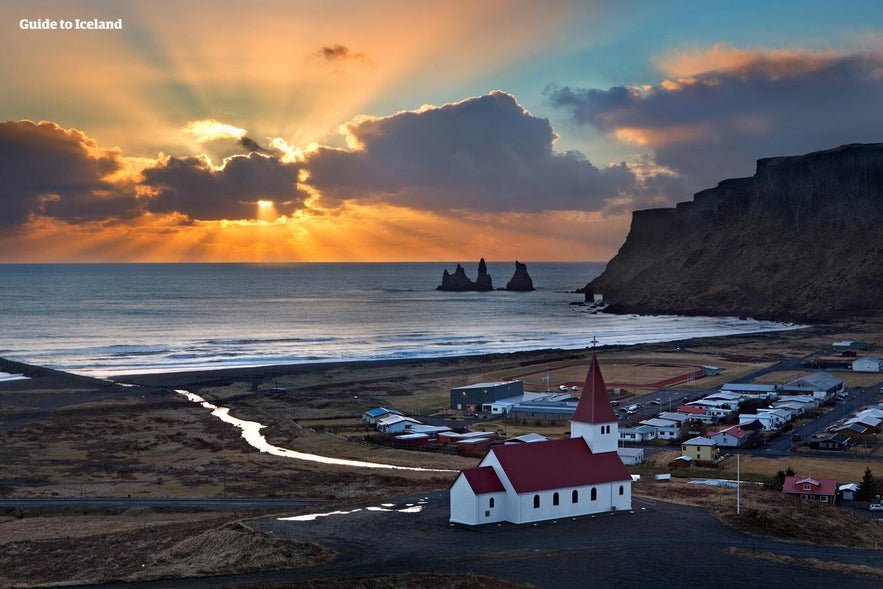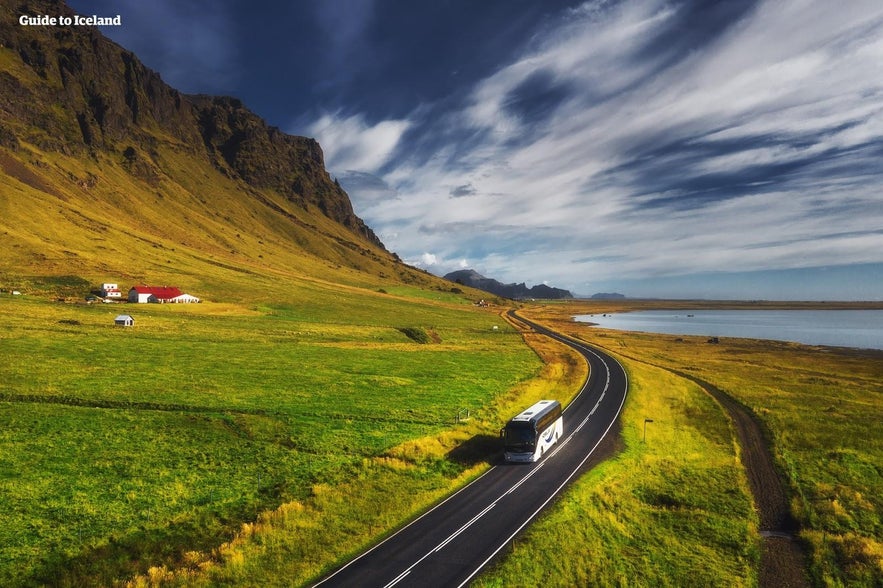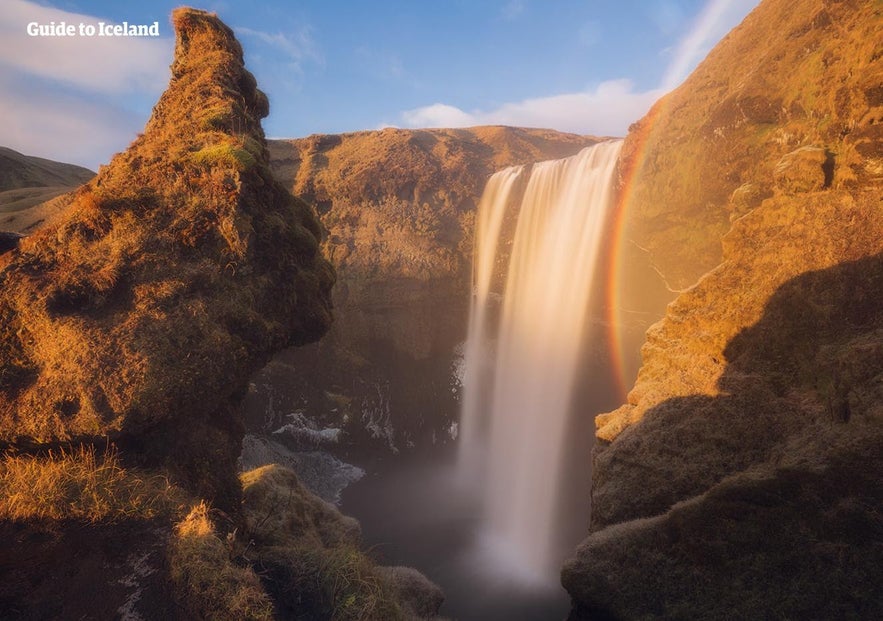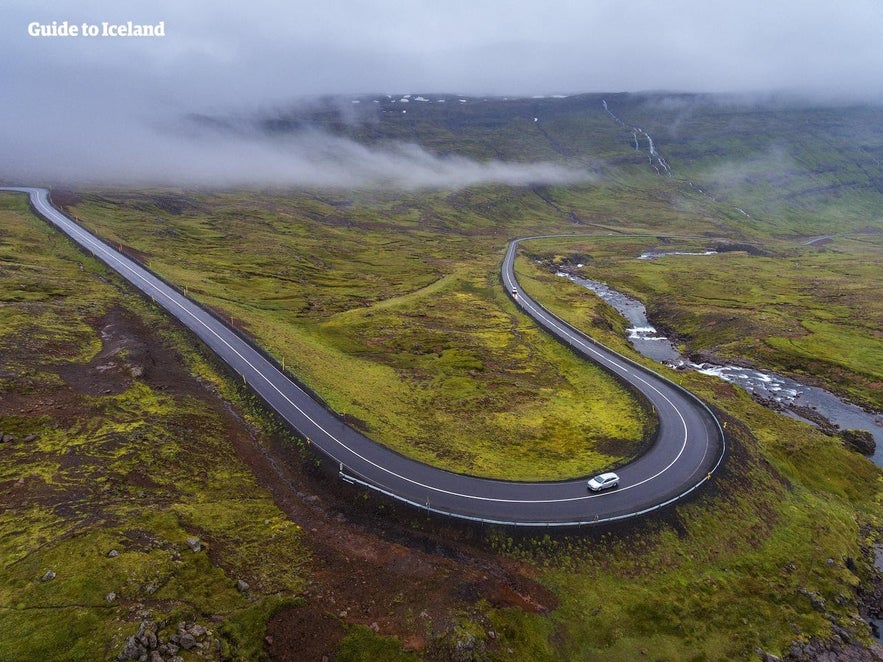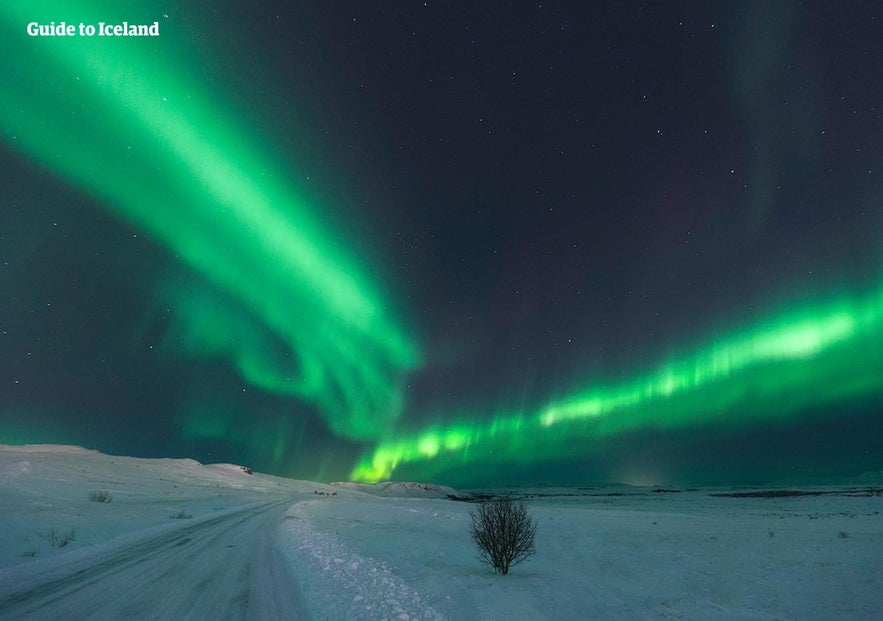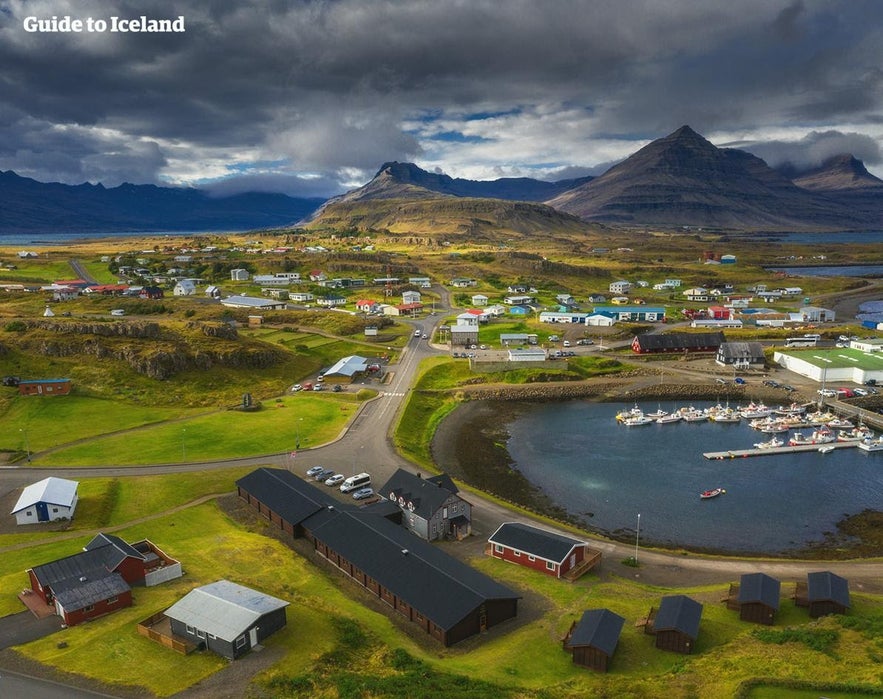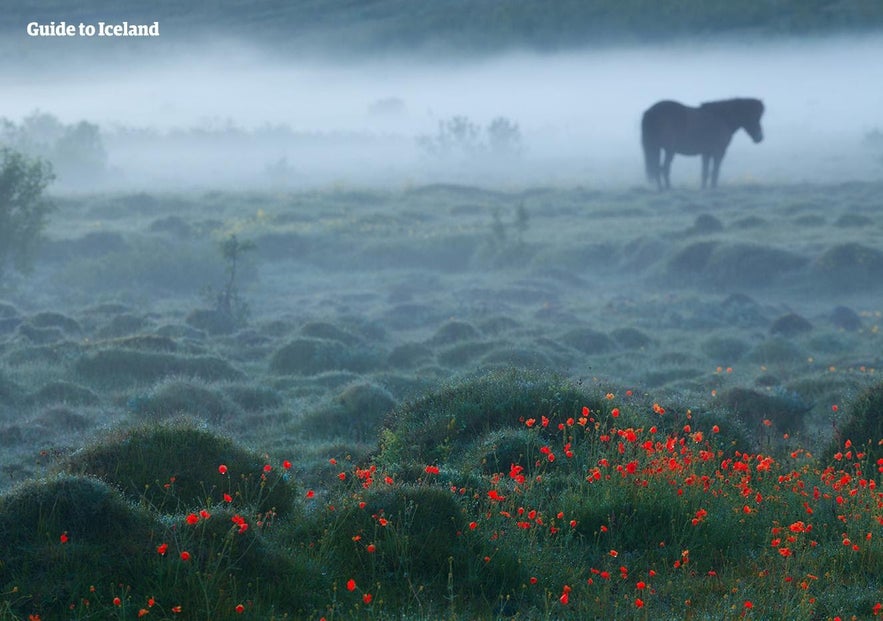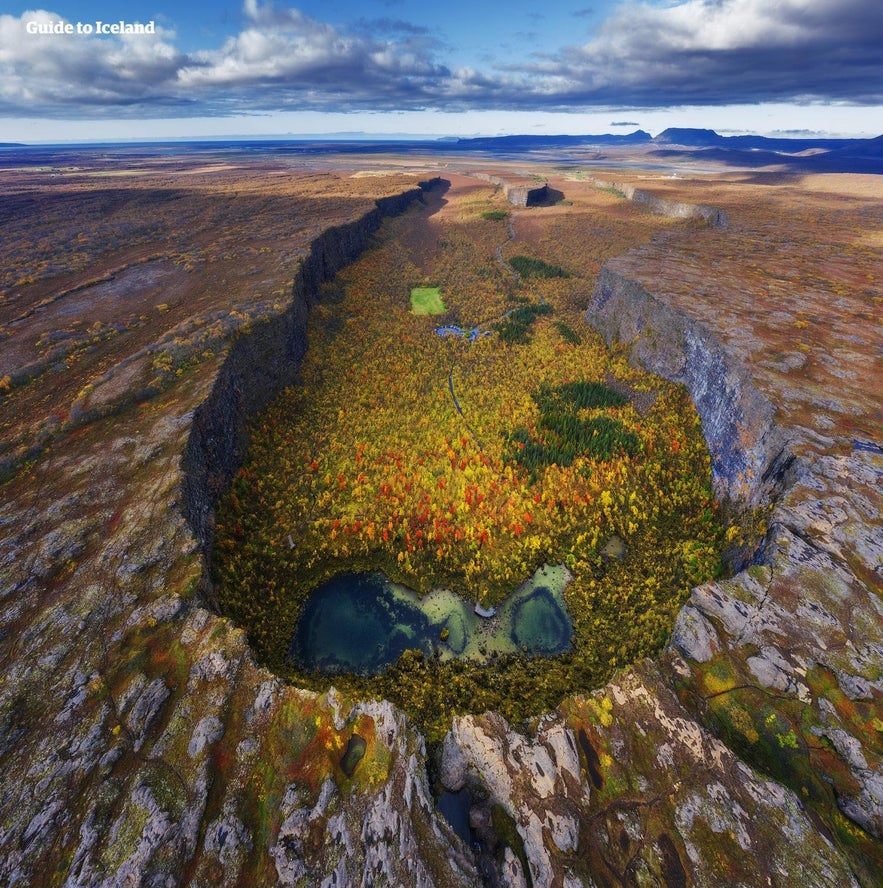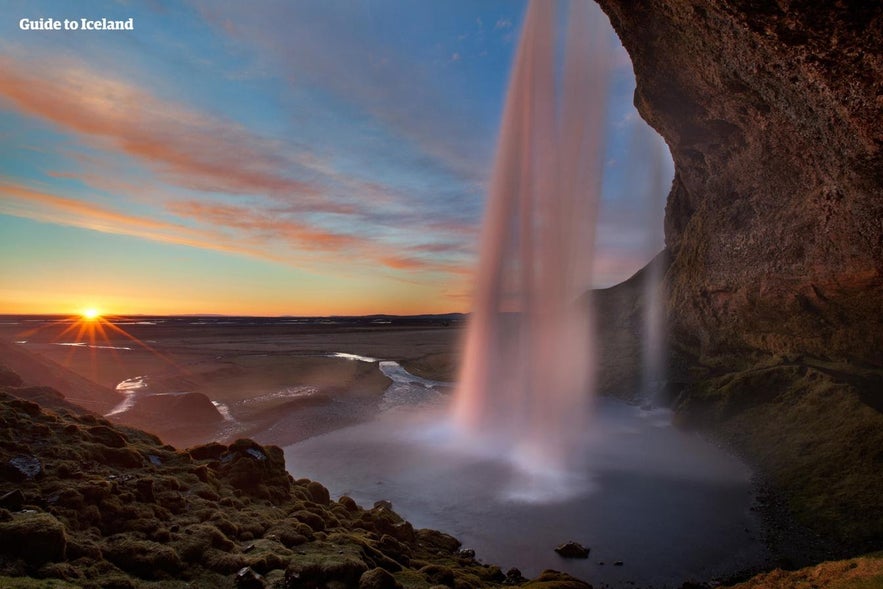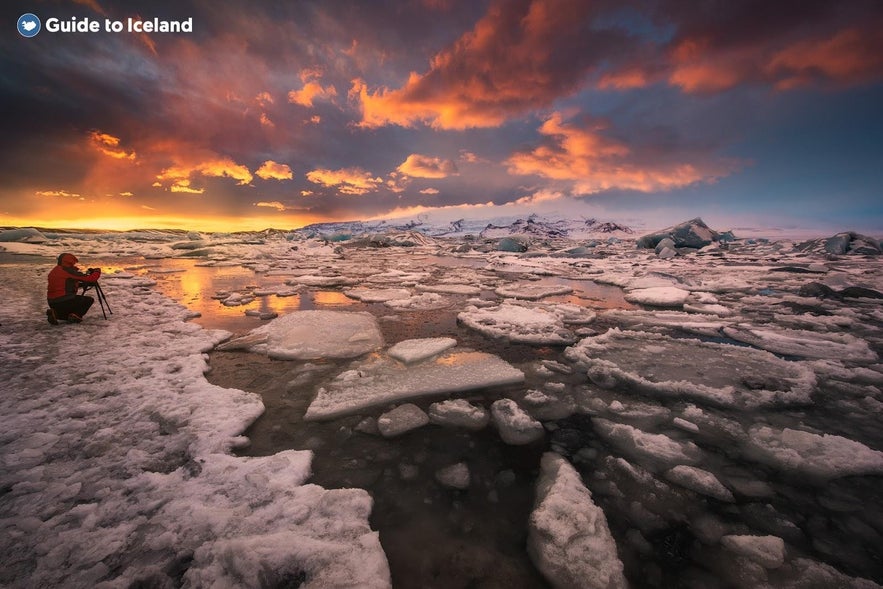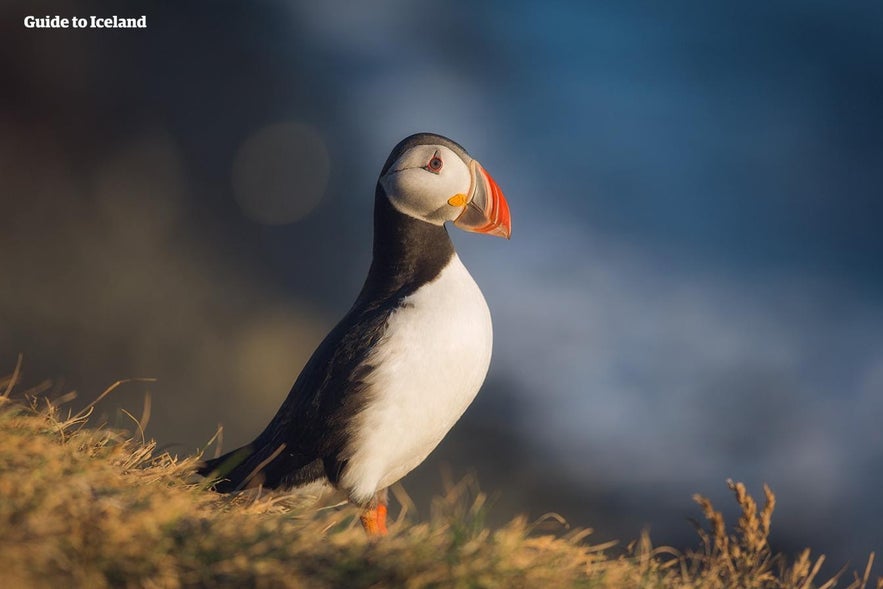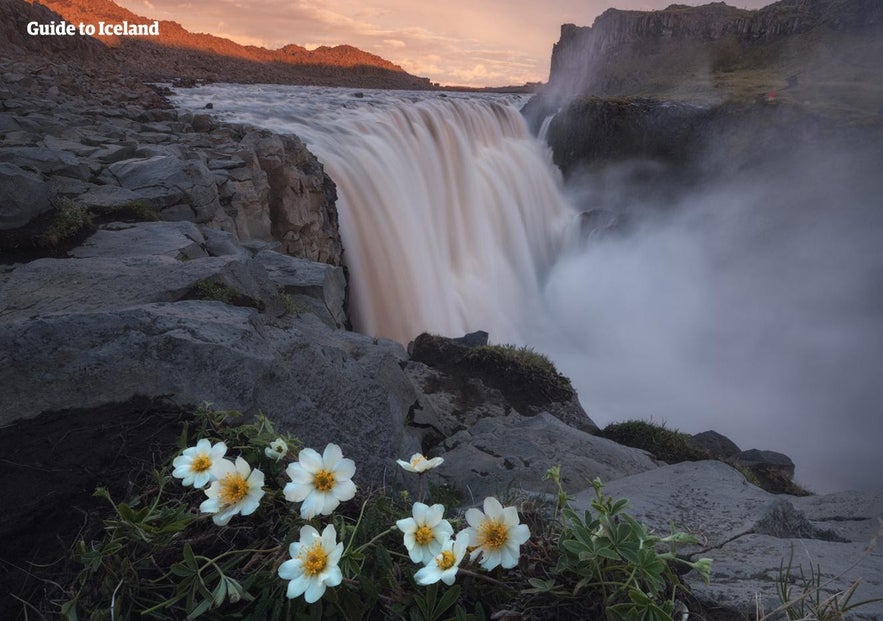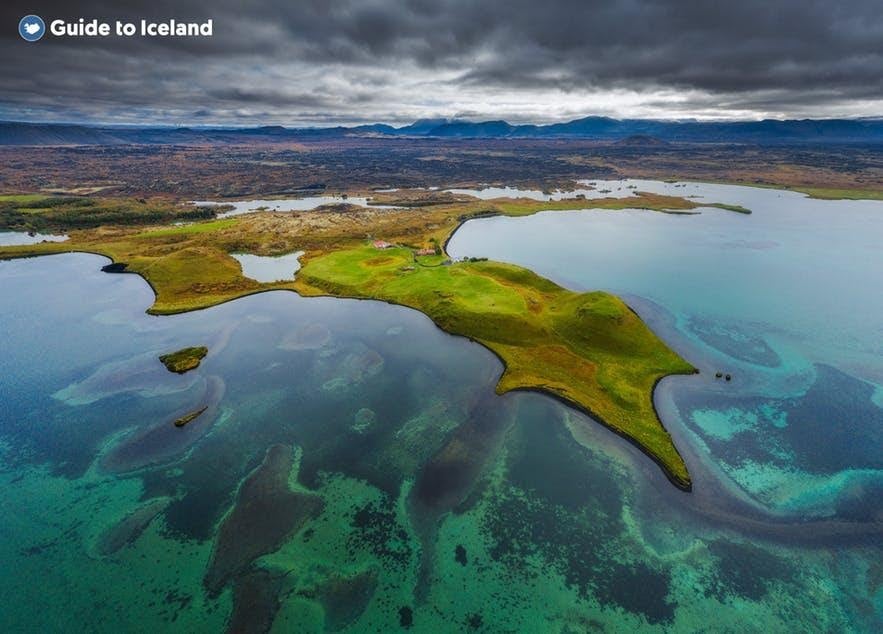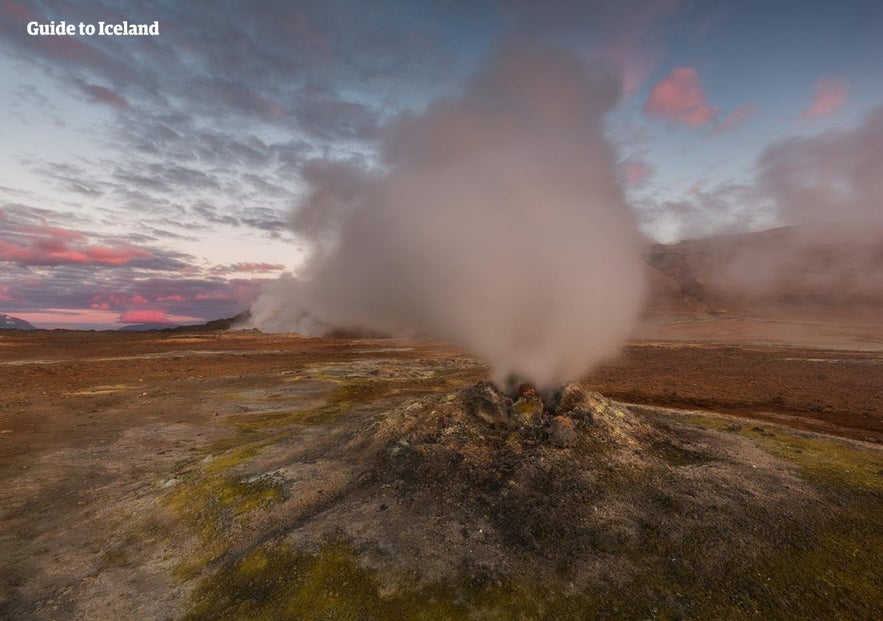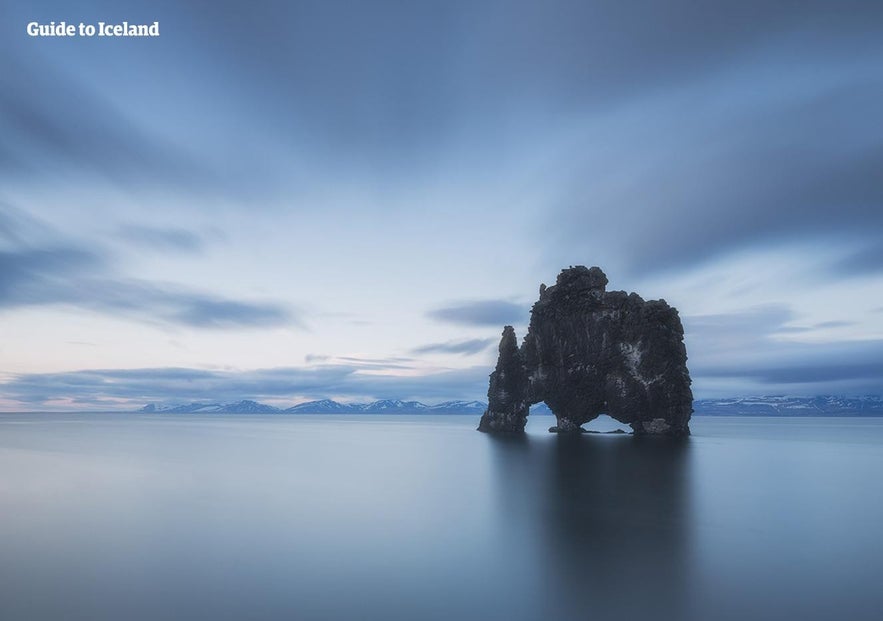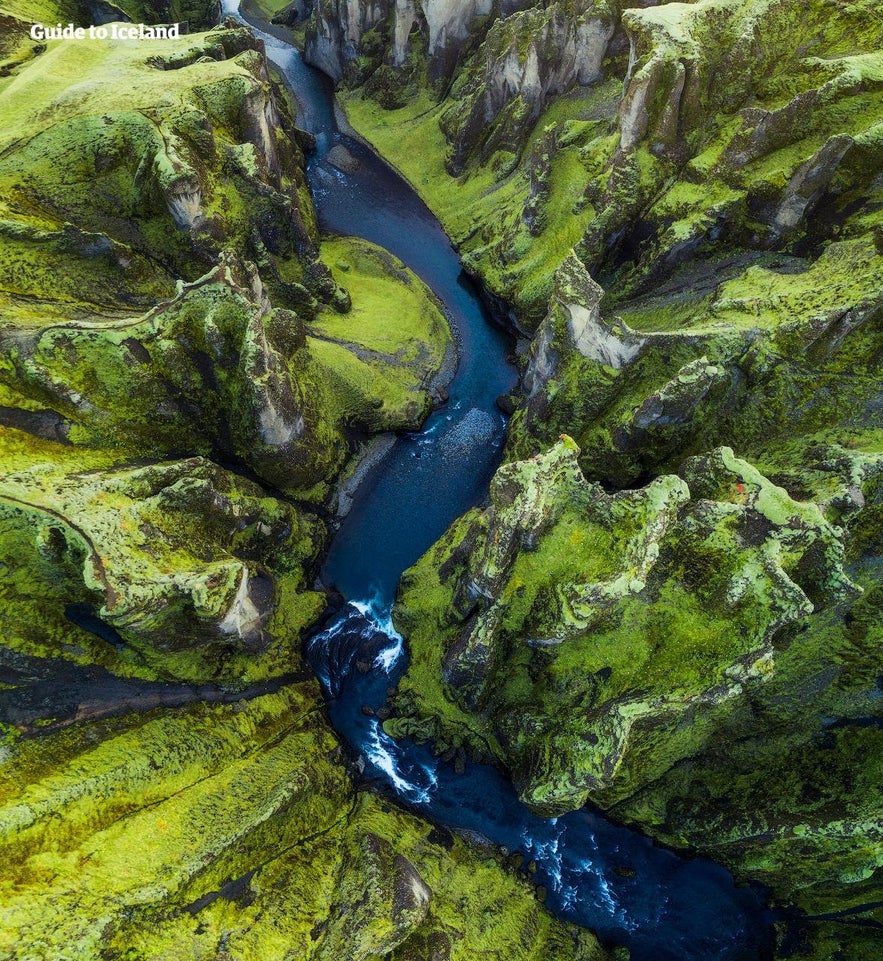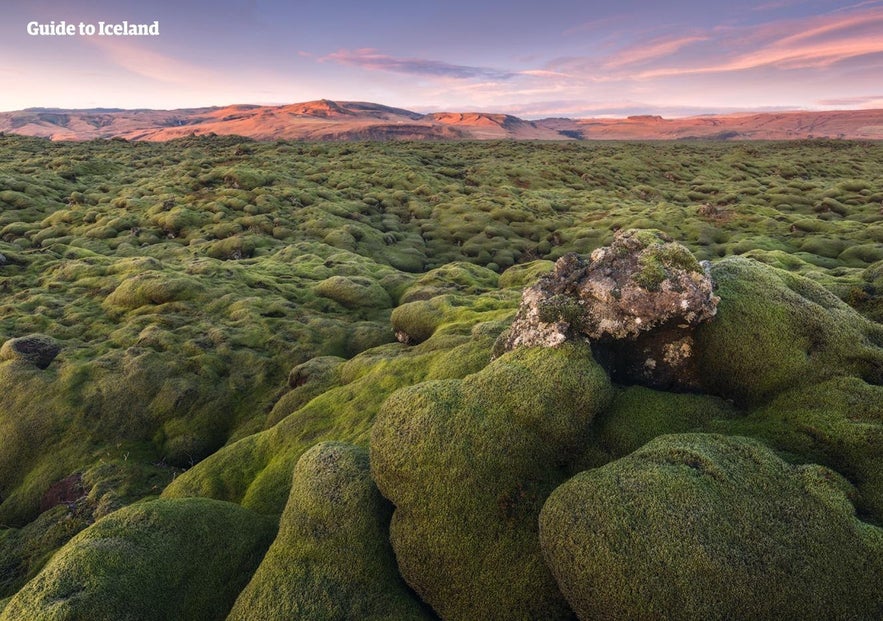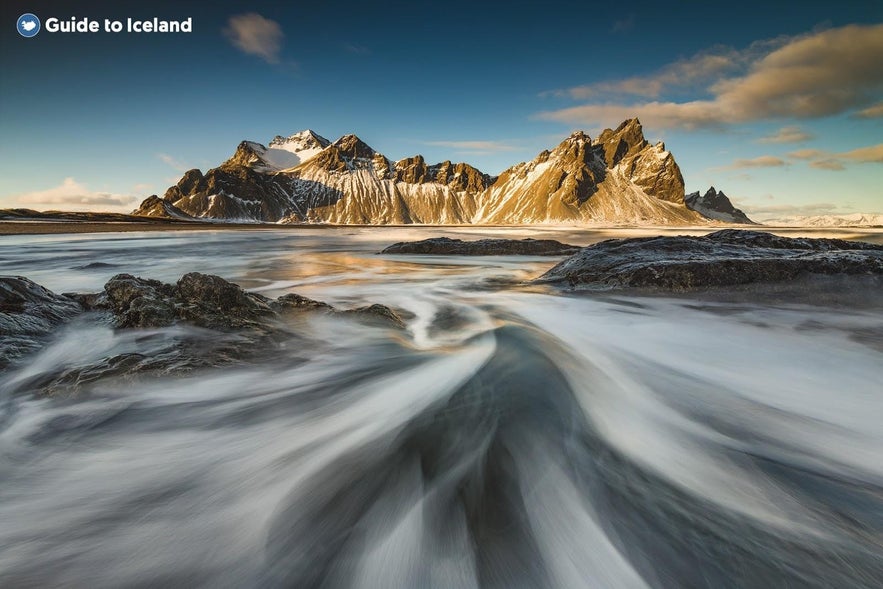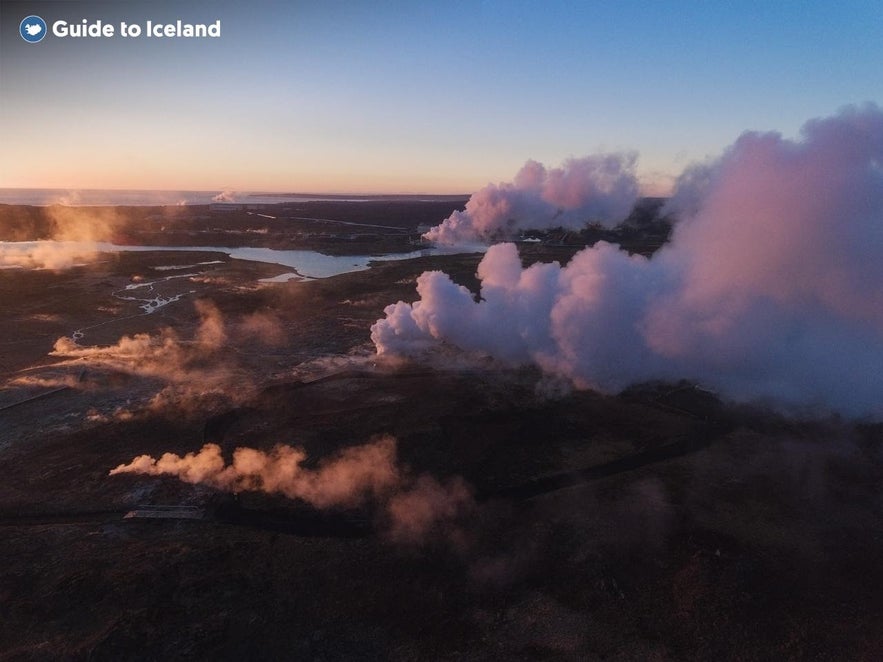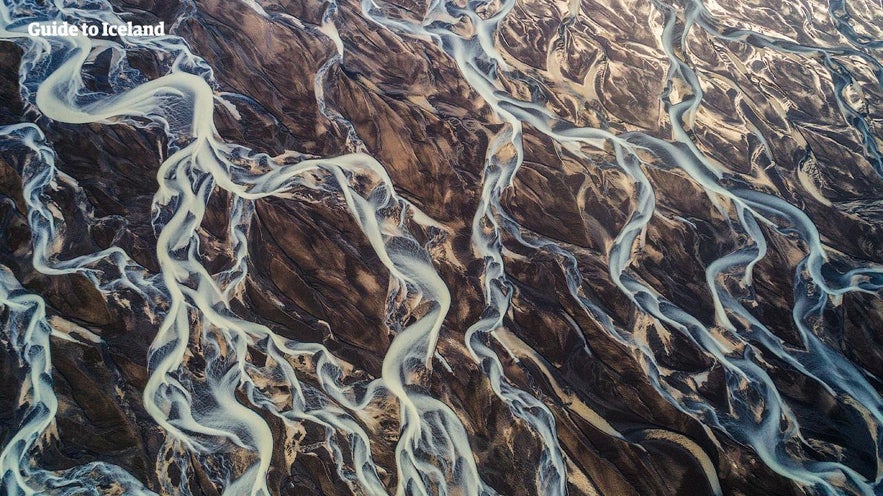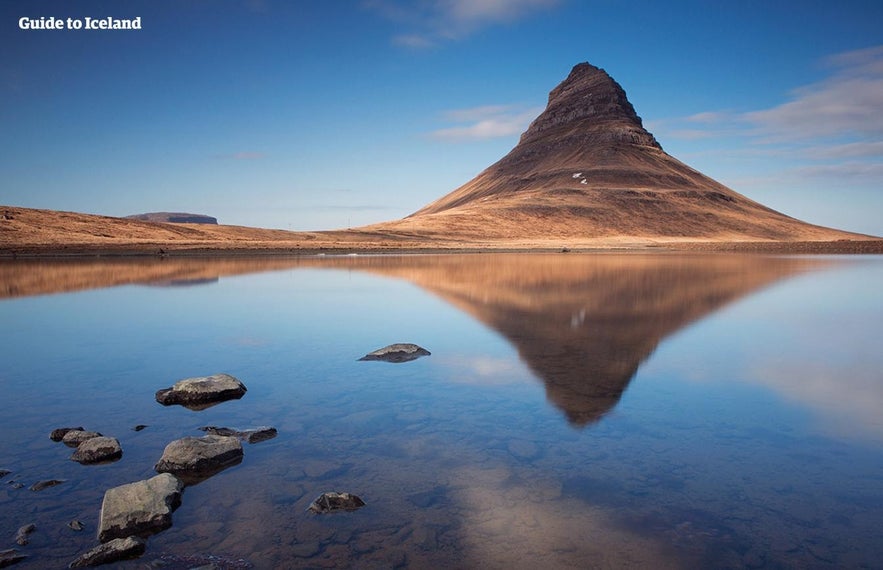
Cycling Around Iceland’s Ring Road
Can you cycle around Iceland’s Ring Road? How long does it take to encircle Iceland on a bicycle? What rules do you need to follow if taking to the country’s roads by bike? Continue reading to learn all about cycling around Iceland’s Ring Road.
Iceland’s Ring Road, otherwise known as Route 1, is a godsend to all travellers. It encircles the country, allowing guests to witness the wonders of the south, east, north and west from the capital of Reykjavík with ease.
Many guests set out to explore the Ring Road either by renting a car, organising a self-drive tour, or jumping on a guided package around the island.
There is, however, a more adventurous method of travelling this route, which allows you to stay active and have a far more immersive experience in Iceland’s nature: cycling.
Of course, such a journey requires a level of fitness, a willingness to face some potentially challenging weather, and a recommended time allowance of around two weeks.
Even so, it throws you right into the spectacular landscapes and provides a unique perspective of Iceland few get to experience. It also provides the freedom to go off the beaten track and is a rewarding test of your body and spirit.
Travellers who wish to cycle Iceland’s Ring Road, however, cannot simply arrive, rent a bike and set out.
Iceland is a sparsely populated country, with often great distances between services and places to stay; it has inherent dangers in its terrain and climate; and there are rules to protect the nature you must adhere to to avoid enormous fines.
But with a little prior knowledge, you can make your cycling trip around Iceland’s Ring Road a once-in-a-lifetime experience you will never forget.
Iceland’s Ring Road - The Distance and the Details
The length of Iceland’s Ring Road is 1,332 kilometres (828 miles) in total.
From Reykjavík, it hugs the South Coast, one of the country’s most diverse and spectacular sightseeing routes, before meandering up the remote and breathtaking Eastfjords.
The road then cuts through the dramatic Vatnajökull National Park into the geothermal wonderland of North Iceland.
As the road returns from Reykjavík, it does bypass two regions, the Westfjords and Snæfellsnes Peninsula, but winds through the otherwise beautiful lands of the west.
Though two weeks are recommended for cyclists to complete this journey, it can be done in less by those in great shape, with experience biking over long distances.
Many have accomplished it in ten days, for example. If you want to take your time and make the most of every site, however, a three or even four week journey is recommended.
Conveniently, the Ring Road passes through most of the country’s major towns.
These include Vík and Kirkjubæjarklaustur in the south, Egillstaðir in the east, Akureyri and Blönduós in the north, and Borgarnes in the west.
The Ring Road is paved throughout, unlike many of other routes in the country which are dirt or gravel.
It is well-maintained year-round, although sections of it are occasionally closed if extreme weather conditions occur, or if flooding from Iceland’s glaciers pose a threat. These road closures are made clear on the website Road.is.
Outside of the capital, the Ring Road is composed of just two lanes, occasionally narrowing into one over bridges (where the vehicle closest to the bridge has right of way).
It is legal to cycle on all of Route 1 with two exceptions. The first of these is the Hvalfjörður Tunnel in west Iceland, which is a six-kilometre undersea road reserved for cars.
There is an alternate, bike-friendly route, which goes around the spectacular fjord of Hvalfjörður.
The second area the Ring Road that is inaccessible to cyclists is in Reykjavík, where it becomes a motorway.
Thankfully, however, the city is well adapted to bikes, with many specialised routes connecting its districts. It is also legal to bike on the pavements on the obvious condition that you respect pedestrians.
As of June 2019, a map of Reykjavík’s cycling routes can be found here, although as the capital pushes towards its goals of sustainability and environmentalism, more are likely to be opened in the coming years.
Weather Conditions on Iceland’s Ring Road
As noted, Iceland is subject to volatile weather throughout the year.
Though snow ploughs are active on all parts of the Ring Road in winter, it’s still very icy and often narrowed to just one lane due to the snow piled on its sides.
As such, those who seek to cycle around Iceland’s Route 1 are highly recommended to come in summer.
Not only are the roads far more dangerous outside this season, but the campsites most bikers rely on will be closed.
Furthermore, the windows of daylight needed to get from destination to destination are much shorter in winter - often just four hours. Such conditions could easily leave you stranded between locations.
Conversely, the summer months boast the Midnight Sun, where you have twenty-four hours of daylight, allowing you to cycle around for as long as you like.
Even at this time of the year, however, cyclists should be aware that Iceland’s weather is fickle, and can change within moments.
Summer snows are not unheard of; rain can still be torrential in June and July; and the winds are often as strong as ever.
To prevent inclement conditions from negatively impacting your holiday, it is vital to keep an eye on Iceland’s weather website. This will tell you everything from the current windspeed and precipitation in all areas in the country, and is usually pretty reliable at predicting conditions over the coming days.
Note that it cannot always be counted upon, and should be checked regularly in case an unexpected event occurs.
In the very unlikely situation that such violent weather stops you from safely reaching your next destination, Iceland’s emergency number is 112, through which you can contact a rescue team.
Best Rest Stops on Iceland’s Ring Road
Due to the fact that the Ring Road connects most major towns in Iceland, is home to countless tourist attractions, and is the backbone of the country’s infrastructure, it has many rest stops and service centres along its length.
Though many of these are rudimentary, with just a gas station, they offer a chance to use the bathrooms, warm up, and grab a coffee.
Simply presuming that you’ll hit a rest stop on your journey, however, is very unwise. There are some stretches where you will cycle for hours without coming across a single building.
Use Google Maps or another up-to-date navigational tool in order to plot your journey before setting out, so you aren’t stranded halfway between Vík and Kirkjubæjarklauster, for example, desperately thirsty.
While service centres provide useful rest stops you, of course, cannot sleep at them. You will also need to know where you are going to rest each night, and make preparations accordingly.
For some guests, this will be countryside hotels that they book in advance, making sure that the distance between each is achievable for the skill level of those cycling.
For many others, however, it will be campsites. Camping in Iceland is hugely popular throughout summer, and there are plenty of camping grounds around the Ring Road.
Campsites in Iceland are inexpensive and usually home to many services, such as hot water for showers and electricity. Some even have geothermally heated hot tubs, pools and restaurants.
Furthermore, almost all of them are located in spectacular natural settings, either by waterfalls or with glacier views, surrounded by volcanic peaks or amongst idyllic countryside.
Considering most travellers who wish to cycle Iceland’s Ring Road do so because they want a more intimate relationship with the country’s nature and to save on expenses, there are few better options than camping.
Note that Iceland’s campsites are usually only open between March and September, and a few of the more remote ones have even smaller windows. Furthermore, many can book up quite quickly, so ensure you reserve your place ahead of time.
Again, ensure that the distance between each site will be comfortable for you and your group, even if your journey were to be taken in rough weather.
Best Attractions by Iceland’s Ring Road
Travel books with hundreds of pages could describe all the sites on the Icelandic Ring Road without giving all of them justice; there are simply that many.
Take into account the attractions just off the road within easy cycling distance, and the amount is simply staggering.
It is, however, possible to summarise some of the most unforgettable places you’ll see biking Route 1 south from Reykjavík.
The first few days of your journey will be spent on the magnificent South Coast, one of the country’s most beloved regions. The reason for this is its incredible diversity.
For example, it boasts the stunning waterfalls Seljalandfoss and Skógafoss; the volcanic glaciers Eyjafjallajökull, Mýrdalsjökull and Vatnajökull; unbelievable coastal geography at Reynisfjara; and the wilderness of the Skaftafell Nature Reserve.
It’s greatest attraction on the Ring Road, however, is to its eastern edge: the Jökulsárlón glacier lagoon.
Countless images selling Iceland depict this otherworldly place, where vast icebergs cruise across an enormous lake, before washing upon the adjacent black sands on the Diamond Beach.
The east of Iceland may not be as popular as the South Coast, but that’s only because of its distance from Reykjavík; it is just as beautiful.
In fact, many visitors claim it is their favourite stretch of the Ring Road because of the lack of other guests at each site.
The highlights of east Iceland are centred around the Eastfjords. Here, Route 1 winds from plunging bay to plunging bay, along spectacular mountain roads, passing tiny fishing villages and beautiful geological formations.
To the right will be the glittering seas, whereas to the left, you’ll have magnificent views over glaciers and mountains.
A particularly wonderful thing about cycling the Ring Road in east Iceland is the abundance of wildlife you may see en route. Wild reindeer, for example, only frequent this part of the country, while the seas and coasts are home to many seals and seabirds.
At the capital of the East, Egilsstaðir, Route 1 turns towards north Iceland.
This part of the journey runs alongside and even into Vatnajökull National Park, a wonderland of ice caps, volcanoes, canyons and river systems.
The region is home to the most powerful waterfall in all of Europe, Dettifoss, which thunders into a haunting, black valley, and the majestic, horseshoe shaped canyon of Ásbyrgi.
After these sites, which are just off the Ring Road, you’ll become enveloped into the beauty of majestic north Iceland.
Like on the South Coast, the attractions here are diverse and breathtaking. Travelling west, you will soon come upon a perfect example of this: Mývatn.
This is an area of many serene lakes, renowned for their abundant birdlife, vibrant flora and spectacular geology. In terms of the latter, you can expect to see towers of basalt rising from the water, lines of pseudocraters, and the dramatic lava fortress of Dimmuborgir.
The reason for this geology is because of the active volcanic systems at work here.
Further evidence of this can be seen in the barren, steaming mountain pass of Námaskarð, where geothermal vents pour poisonous gases into the air.
It can be experienced in a different way at the Mývatn Nature Baths, a spa which provides wonderful respite after a day of cycling.
Continuing along the Ring Road, you will pass the historic and powerful waterfall Goðafoss, before reaching the capital of the North, Akureyri.
Outside of Reykjavík, this is the country’s most populous urban area, and provides an insight into Iceland’s thriving culture.
Cycling west from Akureyri, you will travel through the interior of north Iceland. Of course, you are welcome to divert to some of its beautiful peninsulas, such as Tröllaskagi, renowned for its rural beauty, and Vatnsnes, home the basalt monolith Hvítserkur.
Leaving these areas, you’ll return to Iceland’s west. There are plenty of spectacular sites just off the Ring Road before reaching the commercial centre of Borgarnes, such as the adjacent waterfalls of Barnafoss and Hraunfossar, and Europe’s highest flowing hot spring, Deildartunghver.
At Borgarnes you will have to leave the Ring Road, to bypass the Hvalfjarðargöng tunnel and bike around the beautiful Hvalfjörður fjord instead.
After completing this stretch, you’ll rejoin Route 1 and take the final leg to Reykjavík through mountainous landscapes and idyllic countryside.
If you wish to cycle just a part of Iceland’s Ring Road, you can easily do so by biking from the capital to your destination then getting a domestic flight back, or vice-versa.
There are domestic airports in Egilsstaðir and Akureyri that connect daily with the one in Reykjavík.
Equipment for Cycling Around Iceland’s Ring Road
Because the Ring Road is paved throughout, it is possible to embark upon it on virtually any functioning bike in summer, so long as it comfortably carries you and your baggage.
If you want to embrace the ideals of the open road and seek to locate Iceland’s hidden gems, however, you may have to take some dirt or gravel trails.
For this, you will need a mountain or other offroad bike, such as a fatbike.
If you wish, you can take your own bicycle to Iceland, though it is also possible to rent one on arrival.
You should also bring equipment for basic repairs, such as extra tubes and tires, or purchase them when you get here.
Headlamps and tail lamps are required on your bikes; should the weather turn misty, you’ll want to be visible to all other traffic.
The same goes for reflectors. If you are taking a winter cycling trip, you should have your lights on at all times and it would be wise to wear extra reflective clothing.
While minors are legally required to wear helmets in Iceland, adults are not; even so, it would be foolish to forgo one considering Iceland’s terrain and climate.
It is also highly recommended to wear elbow and knee pads for extra protection.
Due to the fact that you will be out in nature for long stretches at a time, a GPS device could come in very handy.
You should also keep a charged phone with you; most of the country has excellent coverage.
To prepare for a trip in which you will be outdoors for hours, or even days, at a time, you’ll need to bring a wide range of clothes.
Thermals are perfect for being cool enough to wear in warm weather, while doubling as excellent insulation should the weather turn.
You’ll also want light, water- and windproof jackets and trousers to help protect yourself from the elements without overheating.
Gloves and hats will help protect your exposed extremities from cold winds, and cycling glasses or goggles will be appreciated in the rain.
Even if you may not want them while cycling, thick layers, preferably of wool, will help keep you warm when stopping at your destinations, and at night should you be camping.
Your shoes should be flexible and comfortable enough to bike in, while weather-resident enough not to soak your feet in bad weather, and thick woolen socks will be required on chillier days.
Campers will need to bring a collapsable, waterproof tent with an insulating sleeping bag, and may also appreciate a small gas stove. Camping equipment can be rented.
All cyclists embarking on a Ring Road journey should also ensure they have water bottles with them at all times; Iceland’s water is some of the cleanest in the world, so you can easily refill them from taps at service centres around the country.
Of course, cyclists will have a limited capacity for what they can bring, so unnecessary luxuries will have to be left at home. The lighter you can travel, the more comfortable your journey will be.
Rules for Cycling Around Iceland’s Ring Road
With the above knowledge on the Icelandic Ring Road and what you will need for your journey, you are almost ready to begin planning your cycling adventure.
Before you do, however, it is important to be aware of Iceland’s road rules.
Firstly, Icelanders drive on the right; the same rule, of course, applies for cyclists.
If you are travelling in a group, it is important to stay in single file in your lane so that you are not an impediment to drivers.
Secondly, you must stay on the roads. You are welcome to detour onto other routes, but off-road travel is illegal in Iceland to protect the delicate nature.
If you bike onto the open terrain, you risk damaging your equipment, injuring yourself, forever impacting the landscapes, and receiving a fine.
Third, ensure you have head and tail lights, even if travelling under the Midnight Sun; in summer, Iceland is still vulnerable to heavy mists and dense rains, so you want to be as clear to drivers as possible.
Finally, register your trip on Safetravel.is. While not legally required, it’s important to let the Icelandic authorities know when you depart, where you are going and when you are due back, so if something happens to you in nature, rescue teams will know where to find you.
Other Ways to Cycle in Iceland
While cycling the Ring Road in Iceland is a magnificent opportunity, it is also a significant undertaking that many cannot commit to.
Thankfully, it is not the only biking adventure to be had. There are a range of tours dedicated to cycling in Iceland, where you can spend a few hours or days enjoying the country’s magnificent landmarks, rather than a few weeks.
Some of these tours are Reykjavík based, many introduce you to some of the sites of the Ring Road, and others offer opportunities to cycle further flung locations, such as the Snæfellsnes Peninsula and Westfjords.
Experienced mountain bikers with a thirst for adventure may wish to embark on a journey on Iceland’s more rugged routes.
They could, for example, cycle the Kjölur Highland Route, which runs right through the country’s interior, or take the magnificent Laugavegur trail from Landmannalaugar to Þórsmörk.
Iceland’s landscapes welcome those with a passion for cycling and nature with open arms. While there are many ways to do this, cycling around Iceland’s Ring Road offers a simple but spectacular option that bikers of all backgrounds should consider. Happy cycling!
Other interesting articles

Driving in Iceland in July: All You Need to Know
Because of the month's warmer climate, driving in Iceland in July is an excellent way to experience what this amazing island has to offer. Read on to learn everything you need to know about driving ar...Read more
Best Restaurants in East Iceland
Discover the best restaurants to visit along the winding fjords of East Iceland. Enjoy great casual meals and fine dining experiences among the beautiful landscapes and charming towns of the Iceland...Read moreBest Places for Marriage Proposals in Iceland
Where are the best places to propose in Iceland? How do you make the perfect wedding proposal in Iceland? Find the best locations for marriage proposals in Iceland for the truly special moment. Ice...Read more

Download Iceland’s biggest travel marketplace to your phone to manage your entire trip in one place
Scan this QR code with your phone camera and press the link that appears to add Iceland’s biggest travel marketplace into your pocket. Enter your phone number or email address to receive an SMS or email with the download link.



